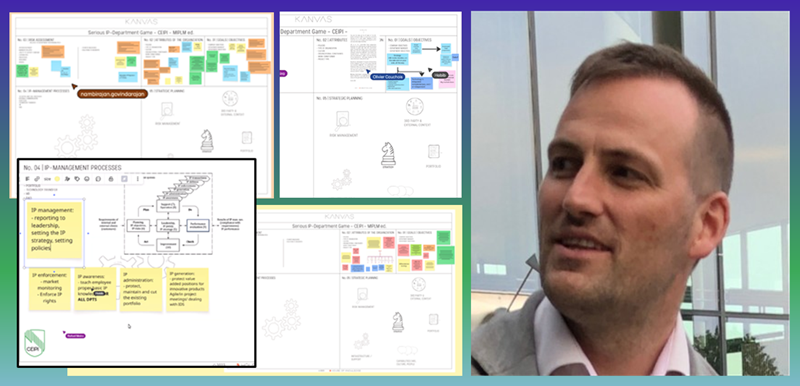IP strategies against reverse engineering 🎯 IP Management Pulse #39
Many IP experts in the IP community at I3PM, the HTB-EPO initiative, IP offices and institutions in national and regional innovation systems have asked Prof. Dr. Alexander Wurzer: “Where can you be sure not to miss any important IP management content?” In fact, you have to follow a number of interesting feeds to really keep up with the global developments around IP management. To make this easier he decided to offer his own personal newsletter for IP management. Here, you can find the latest issues in the archive and also subscribe. A fresh read with all important IP Management content will be sent to the subscribers every second Thursday at 7:00 (CET), so that they can start the day informed.
The next Newsletter will cover the following topics:
IP strategies against reverse engineering
In a recent landmark decision, the U.S. Federal Circuit ruled on the trade secret dispute between AMS-OSRAM and Renesas. At the heart of the case: whether AMS-OSRAM’s sensor designs were misappropriated during a “design win” process. The court concluded that trade secrets may lose protection once the product becomes capable of being reverse-engineered—regardless of whether anyone actually did so.
👉️ To the LinkedIn post
Incremental innovation
Many succesful companies are not the first to bring a new product class to the market, but instead to develop small improvements, that set their products apart. Examples, such as Amazon, Gilette, and Apple, are shown in the LinkedIn post.
👉️ To the LinkedIn post by Andrew Rapacke
Plant patents
IP for plants plays an important role to secure a ROI for the breeding of new plant variaties best suitable for the processing into specific foods and beverages. A current opposition illustrates the state of plant patents in Europe.
👉️ To the LinkedIn post by Jocelyn Bosse
Copyright and AI training data
Since image creation AIs reached a sufficient output quality, copyright owners, such as Disney and Universal, are fighting against the reproduction of their copyright protected characters by AI. The LinkedIn post discusses the latest addition to the series of copyright law suits in the US.
👉️ To the LinkedIn post by Edward Lee
IP litigation in China
China still has a reputation to be a favorable place for IP infringement. But current examples show that it became a jurisdiction, where IP litigation is made comparably easy for international brands.
👉️ To the LinkedIn post by Olivia Dhordain
Whom to follow
Ken McInnes is Director at Australian based IP Solved with decades of experience in global intellectual property strategies. On LinkedIn, he shares information about current IP case studies and developments from all relevant jurisdictions worldwide. Additionally, he supports the IP business academy as an ambassador in Australia.
Hady Khawand is Founder & CEO at AÏP Genius and Adjunct Professor at Saint Joseph University Dubai. He shares on his LinkedIn feed insights into the current use of AI to support IP owners in managing their portfolios. He also supports the IP business academy as an ambassador in the United Arab Emirates.
New 🔗dIPlex entry: The Intersection of Intellectual Property and Human Resources
In today’s fiercely competitive global landscape, a company’s intellectual property (IP) stands as a cornerstone of its value, innovation, and market differentiation. Patents protect groundbreaking inventions, trademarks build brand recognition and trust, copyrights safeguard creative expressions, and trade secrets offer a competitive edge through confidential knowledge. However, the safeguarding and strategic management of those intangible yet invaluable assets are inextricably linked to the human element within an organization. This is where Human Resources (HR) plays a pivotal, often underestimated, role. HR professionals are not merely administrators of personnel; they are frontline defenders and strategic enablers in the complex arena of IP protection.
New 🔗dIPlex entry: IP as a Leadership Tool
Intellectual Property (IP) has transcended its traditional categorization as a purely legal concern, evolving into a pivotal leadership question that resides squarely within the purview of the C-suite. Its relevance for top-level executives stems from its profound impact on a company’s overarching strategic direction, its ability to establish and sustain a competitive advantage in the marketplace, and its fundamental contribution to the organization’s overall valuation and potential for growth. Consequently, a proactive and informed approach to IP management is no longer a peripheral activity but rather an indispensable element of effective corporate governance and strategic decision-making at the highest levels.
From Hidden Expertise to Recognised Value – How to become discoverable, not boastful, as an IP expert
Many IP professionals feel stuck between two extremes: being invisible or sounding promotional. They want their expertise to be seen. Recognised. Respected. But not at the cost of seeming self-important.
The good news? Visibility doesn’t require self-promotion. It requires clarity, strategic presence, and consistency. Let’s look at how to show up more intentionally, without losing the substance or seriousness your work deserves.
Hands-on learning with a serious IP-department game at the CEIPI MIPLM
In an increasingly complex world, traditional learning methods sometimes fall short in preparing individuals for real-world challenges. This is where “serious games” come into play. Unlike games designed purely for entertainment, serious games have a primary purpose beyond mere amusement: to educate, train, or inform. They leverage the engaging nature of games – their rules, objectives, and interactive elements – to achieve specific learning outcomes.
IP for startups
Especially in digital industries, such as AI and Software as a Service, startups are gaining impressive valuations, which are also justified due to their skilful IP protection. A prime example for that is Yangtze Memory Technologies Co (YMTC), which flourishes in the dynamic semiconductor industry.
How to utilize IP for business growth in a startup is explained by Peter Stiefel in our distance learning diploma course. A summary is available in this article.
Trade secrets, a European perspective
Trade secrets are a vital component of a company’s IP portfolio and a critical driver of competitive advantage. By understanding the legal and business definitions of trade secrets, implementing reasonable measures to protect them, and fostering a culture of awareness within the company, organizations can unlock the full potential of their IP and maintain a competitive edge in today’s dynamic marketplace.








